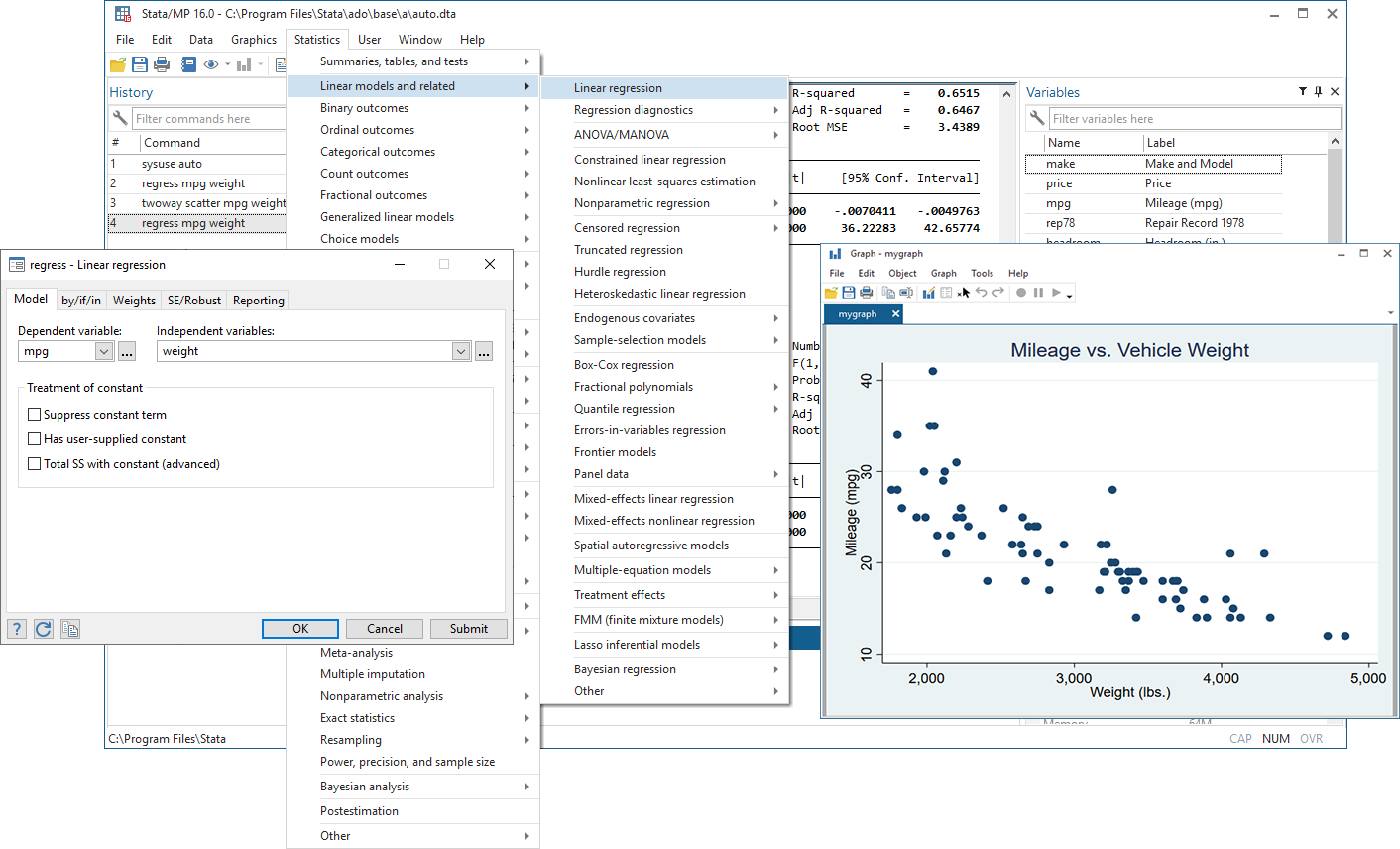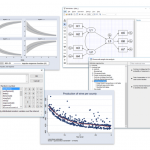

ado-files followed in Stata 2.1, allowing a user-written program to be automatically loaded into memory. The program command was implemented in Stata 1.2, giving users the ability to add their own commands.

Certain developments have proved to be particularly important and continue to shape the user experience today, including extensibility, platform independence, and the active user community. Hundreds of commands have been added to Stata in its 36-year history. All Stata files are platform-independent. Since then, versions of Stata have been released for systems running Unix variants like Linux distributions, Windows, and MacOS. The initial release of Stata was for the DOS operating system. With the release of Stata 6 in 1999, updates began to be delivered to users via the web. In its early years, extra sets of Stata programs were sometimes sold as "kits" or distributed as Support Disks.
STATA SOFTWARE CODE
There have been 17 major releases of Stata between 19, and additional code and documentation updates between major releases. The first version was released in 1985 with 44 commands. Stata was written, then as now, in the C programming language, initially for PCs running the DOS operating system.
STATA SOFTWARE SOFTWARE
The software was originally intended to compete with statistical programs for personal computers such as SYSTAT and MicroTSP. The development of Stata began in 1984, initially by William (Bill) Gould and later by Sean Becketti. Some other econometric applications, including gretl, can directly import Stata file formats. Stata can read and write SAS XPORT format datasets natively, using the fdause and fdasave commands.

Thus, the current Stata release can always open datasets that were created with older versions, but older versions cannot read newer format datasets. Every version of Stata can read all older dataset formats, and can write both the current and most recent previous dataset format, using the saveold command. Stata's proprietary file formats have changed over time, although not every Stata release includes a new dataset format. This includes ASCII data formats (such as CSV or databank formats) and spreadsheet formats (including various Excel formats). Stata can import data in a variety of formats. Stata refers to the columns of tabular data as variables. Stata's data format is always tabular in format. Stata utilizes integer storage types which occupy only one or two bytes rather than four, and single-precision (4 bytes) rather than double-precision (8 bytes) is the default for floating-point numbers. Its compress command automatically reassigns data to data types that take up less memory without loss of information. Stata allows for flexibility with assigning data types to data.

Until the release of version 16, Stata could only open a single dataset at any one time. From version 11 on, other commands can be executed while the data browser or editor is opened. The dataset can be viewed or edited in spreadsheet format. Starting with version 8.0, Stata has included a graphical user interface based on Qt framework which uses menus and dialog boxes to give access to many built-in commands. Technical overview and terminology User interface įrom its creation, Stata has always employed an integrated command-line interface. The current version is Stata 17, released in April 2021. Since then, a new version has been released once every two years. A major release in 2003 included a new graphics system and dialog boxes for all commands. In 1993, the company moved to College Station, TX and was renamed Stata Corporation, now known as StataCorp. Stata was initially developed by Computing Resource Center in California and the first version was released in 1985. It is used by researchers in many fields, including economics, sociology, political science, biomedicine, and epidemiology. Stata ( / ˈ s t eɪ t ə/, STAY-ta, alternatively / ˈ s t æ t ə/, occasionally stylized as STATA ) is a general-purpose statistical software package developed by StataCorp for data manipulation, visualization, statistics, and automated reporting.


 0 kommentar(er)
0 kommentar(er)
